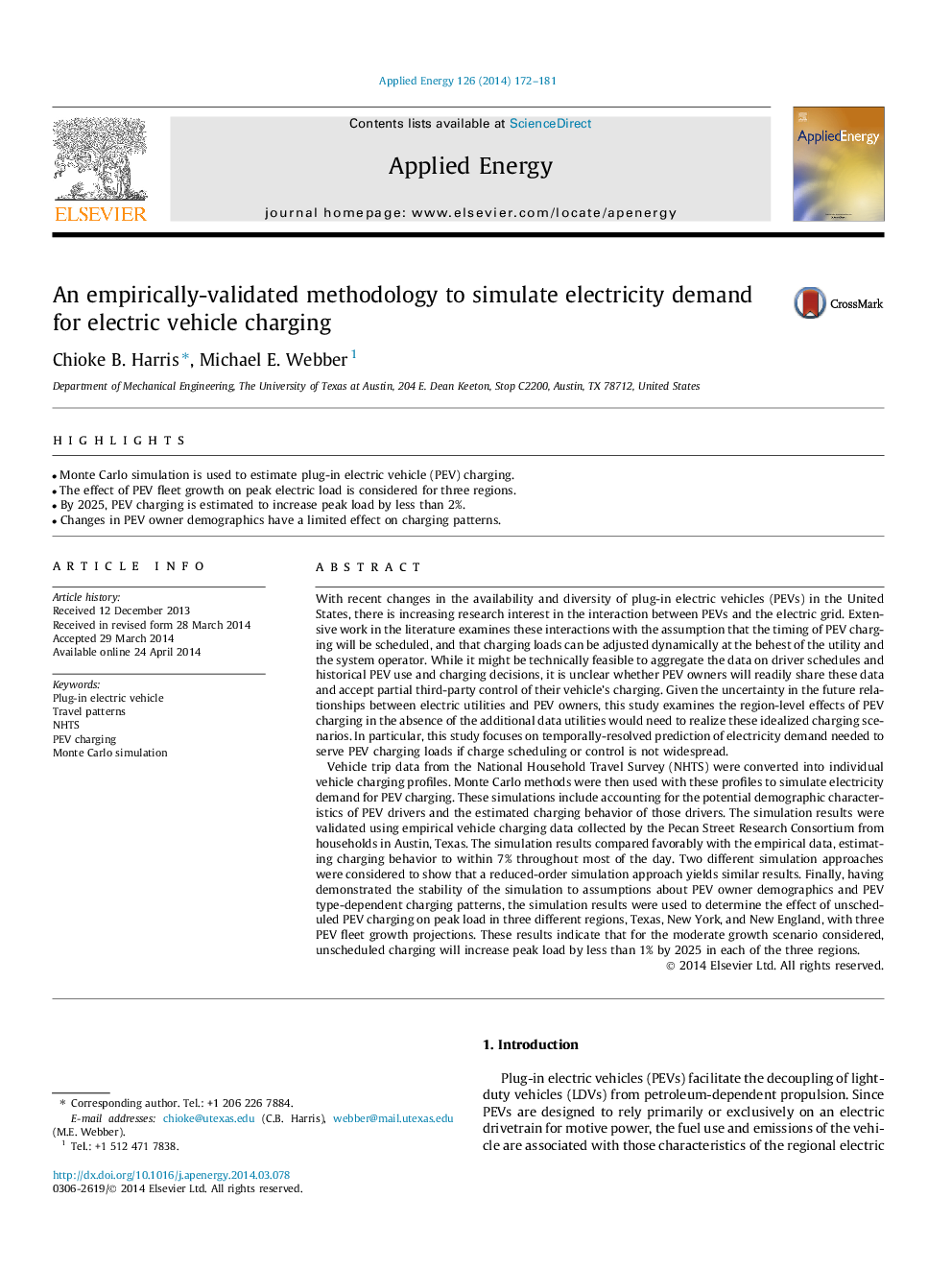| Article ID | Journal | Published Year | Pages | File Type |
|---|---|---|---|---|
| 242795 | Applied Energy | 2014 | 10 Pages |
•Monte Carlo simulation is used to estimate plug-in electric vehicle (PEV) charging.•The effect of PEV fleet growth on peak electric load is considered for three regions.•By 2025, PEV charging is estimated to increase peak load by less than 2%.•Changes in PEV owner demographics have a limited effect on charging patterns.
With recent changes in the availability and diversity of plug-in electric vehicles (PEVs) in the United States, there is increasing research interest in the interaction between PEVs and the electric grid. Extensive work in the literature examines these interactions with the assumption that the timing of PEV charging will be scheduled, and that charging loads can be adjusted dynamically at the behest of the utility and the system operator. While it might be technically feasible to aggregate the data on driver schedules and historical PEV use and charging decisions, it is unclear whether PEV owners will readily share these data and accept partial third-party control of their vehicle’s charging. Given the uncertainty in the future relationships between electric utilities and PEV owners, this study examines the region-level effects of PEV charging in the absence of the additional data utilities would need to realize these idealized charging scenarios. In particular, this study focuses on temporally-resolved prediction of electricity demand needed to serve PEV charging loads if charge scheduling or control is not widespread.Vehicle trip data from the National Household Travel Survey (NHTS) were converted into individual vehicle charging profiles. Monte Carlo methods were then used with these profiles to simulate electricity demand for PEV charging. These simulations include accounting for the potential demographic characteristics of PEV drivers and the estimated charging behavior of those drivers. The simulation results were validated using empirical vehicle charging data collected by the Pecan Street Research Consortium from households in Austin, Texas. The simulation results compared favorably with the empirical data, estimating charging behavior to within 7% throughout most of the day. Two different simulation approaches were considered to show that a reduced-order simulation approach yields similar results. Finally, having demonstrated the stability of the simulation to assumptions about PEV owner demographics and PEV type-dependent charging patterns, the simulation results were used to determine the effect of unscheduled PEV charging on peak load in three different regions, Texas, New York, and New England, with three PEV fleet growth projections. These results indicate that for the moderate growth scenario considered, unscheduled charging will increase peak load by less than 1% by 2025 in each of the three regions.
